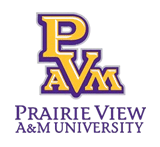Abstract
The sustainability and spread of innovations is often elusive, presenting continuous challenges to clinicians and healthcare leaders. Somewhere between 33 - 70% of all innovations are reportedly not sustained, and even fewer are spread beyond the original team, or to other units within an organization. In plain language, sustainability is defined as locking in progress, while continually building upon that foundation, while spread is the exchange of knowledge and experience to others beyond the original implementing team. The literature supports the concept that sustainability is both multi-dimensional and multi-factorial and has several characteristics and pre-conditions. Tax-exempt, not-for-profit organizations in the USA must provide measurable community benefits to the populations they seek to serve. Many of these community benefits take the form of locating necessary services closer to or directly within the communities being served in order to enhance access. A case study of a 16 year effort to provide a medical home-oriented primary care model to underserved children in Houston, Texas Children’s Pediatrics’ Community Cares, is presented as illustrative of such a community benefit. Many of the characteristics and preconditions essential to a model for sustainability and spread are highlighted and the Community Cares case study is discussed from the standpoint of this framework.
Recommended Citation
Austin, Robert F.; Coleman, Patricia; Meads, Stephanie; and Giardino, Angelo P.
(2016)
"Sustainability and Spread of Community-based Initiatives: A case study of Community Cares, a Children’s Hospital’s 16 year effort to serve its community,"
Journal of Family Strengths: Vol. 16:
Iss.
2, Article 10.
DOI: https://doi.org/10.58464/2168-670X.1316
Available at:
https://digitalcommons.library.tmc.edu/jfs/vol16/iss2/10





